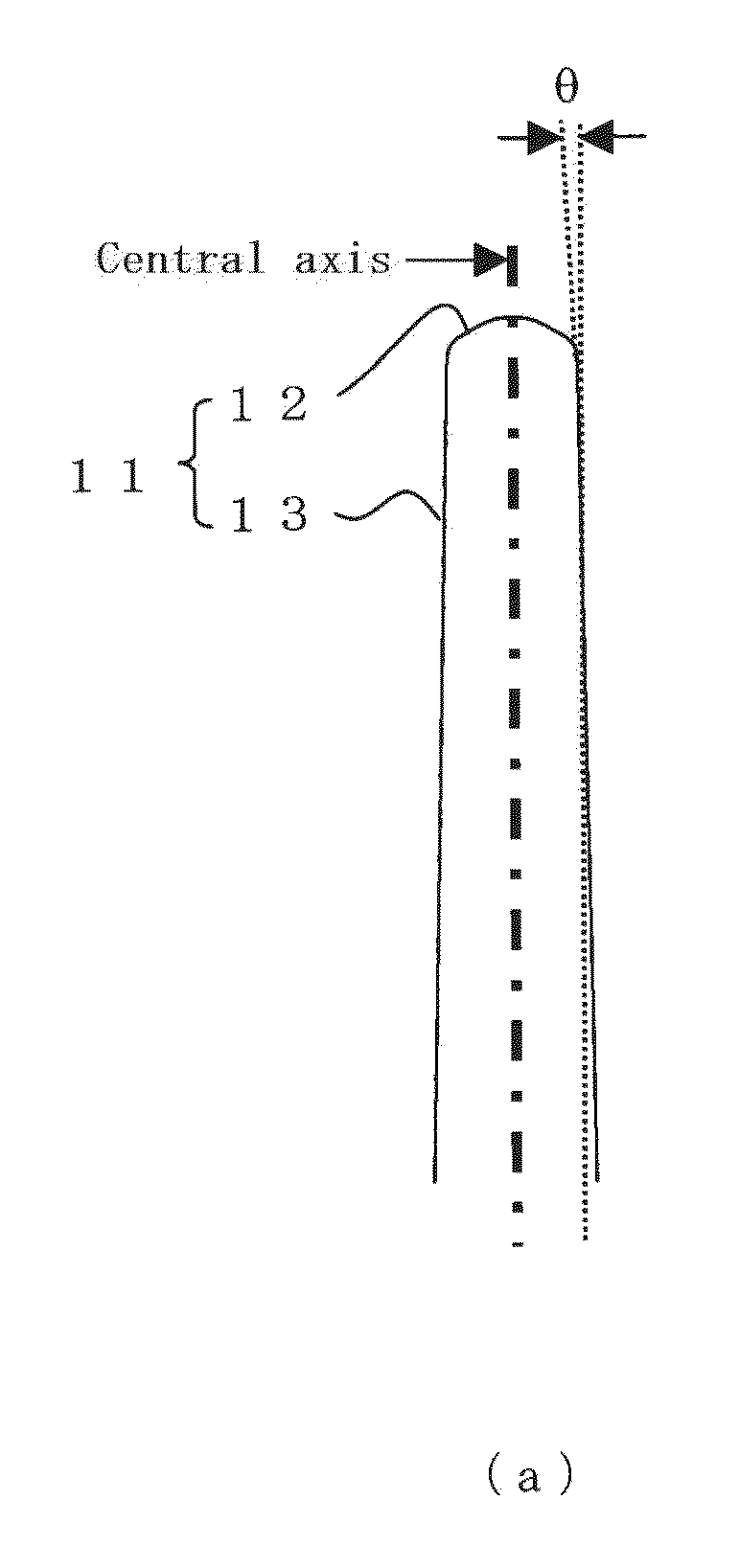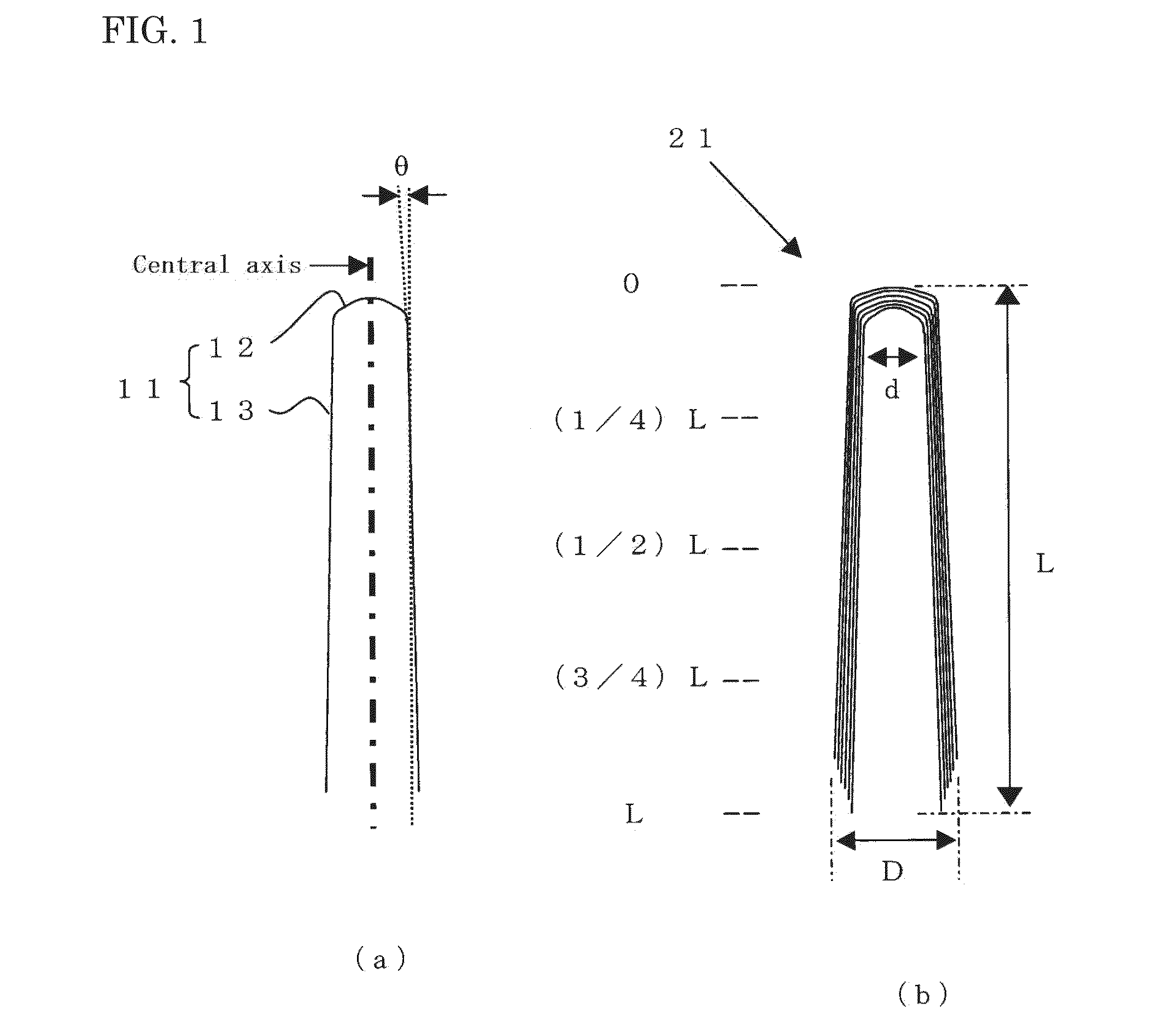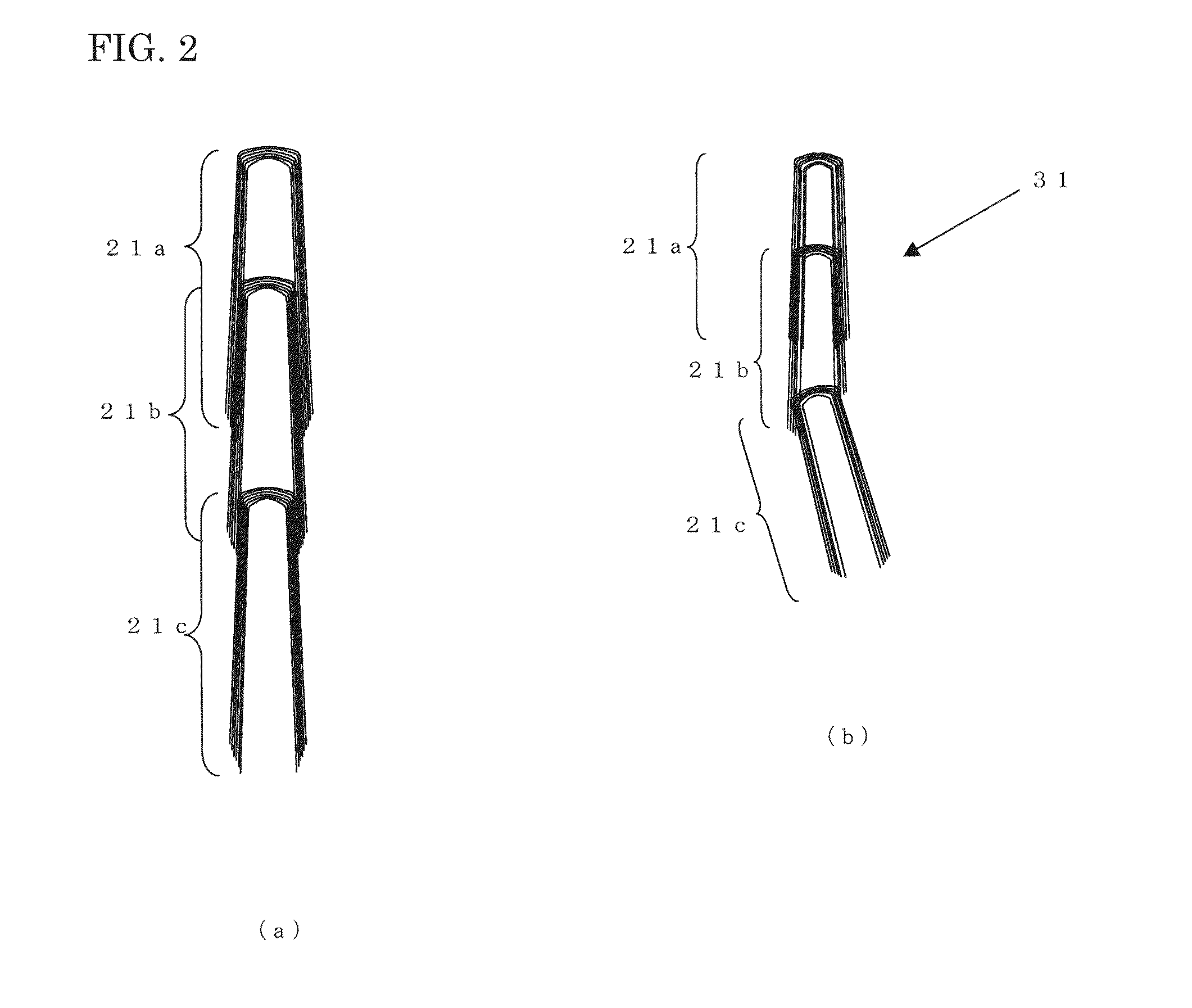Lithium-titanium complex oxide electrode material conjugated with fine carbon fiber
a technology of complex oxide electrode material and lithium titanium complex, which is applied in the field of lithium-titanium complex oxide electrode material conjugated with fine carbon fiber, can solve the problems of high price, high price, and inability to solve problems, and achieve excellent discharge properties under high load, improve mobility of lithium ions, and reduce cycle properties
- Summary
- Abstract
- Description
- Claims
- Application Information
AI Technical Summary
Benefits of technology
Problems solved by technology
Method used
Image
Examples
example 1
[0163]To 100 parts by weight of anatase-type titanium dioxide particles [TiO2: molecular weight 79.8658](Sakai Chemical Industry Co., Ltd., SA-1, average primary particle size: 0.15 μm, specific surface area: 9.7 m2 / g) were added 2.35 parts by weight of the fine carbon fiber agglomerate A (2% by weight based on the total amount of lithium titanate) and an appropriate amount of ethanol as a solvent, and the mixture was stirred at a rotation number of 250 RPM for 30 min using an agate ball centrifugal planetary mill having a body inner diameter of 5 cm. The ball used was made of agate and had a diameter of 10 mm. After the mixing, the solvent was evaporated at 100° C. To the titanium dioxide particle mixture which was coated by the dispersed fine carbon fiber A was added 42.0 parts by weight of lithium hydroxide [LiOH.H2O: molecular weight: 41.96362] (Honjo Chemical Corporation, coarse granulate) (Li / Ti molar ratio: 0.80), and the mixture was stirred for 10 min using a centrifugal pla...
examples 2 to 7
[0164]Lithium titanate complex oxide particles composited with a fine carbon fiber was produced as shown in Table 1 using the titanium dioxide particles as used in Example 1 and fine carbon fiber A or B, varying a content of the fine carbon fiber and the calcination conditions, and an average particle size, a specific surface area, a crystal structure and a volume resistivity of each sample were measured as described in Example 1. The preparation conditions and the physical properties are shown in Table 1.
example 8
(1) Preparation of an Aqueous Dispersion of a Fine Carbon Fiber
[0166]Five parts by weight of the fine carbon fiber A was added to 1 part by weight of carboxymethylcellulose (Daicel Finechem Ltd., CMC Daicel 1110) dissolved in 94 parts by weight of ion-exchange water and the mixture was stirred, and then the fiber was opened and dispersed for 40 min using an ultrasonic generator (Nippon Seiki CO., Ltd, Ultrasonic Homogenizer MODEL US-600T), to prepare an aqueous dispersion of the fine carbon fiber containing 5% by weight of the fine carbon fiber.
(2) Preparation of a Starting Slurry for Calcination and Production of Lithium-Titanium Complex Oxide Particles
[0167]In 160 parts by weight of ion-exchange water was added 38.0 parts by weight of lithium carbonate [Li2CO3: molecular weight 73.8909] (Kennametal Inc., 60M, average primary particle size: 5.3 μm, specific surface area: 1.4 m2 / g) (Li / Ti molar ratio: 0.82) with stirring to prepare a solution, to which was then added 100 parts by we...
PUM
| Property | Measurement | Unit |
|---|---|---|
| specific surface area | aaaaa | aaaaa |
| specific surface area | aaaaa | aaaaa |
| particle size | aaaaa | aaaaa |
Abstract
Description
Claims
Application Information
 Login to View More
Login to View More - R&D
- Intellectual Property
- Life Sciences
- Materials
- Tech Scout
- Unparalleled Data Quality
- Higher Quality Content
- 60% Fewer Hallucinations
Browse by: Latest US Patents, China's latest patents, Technical Efficacy Thesaurus, Application Domain, Technology Topic, Popular Technical Reports.
© 2025 PatSnap. All rights reserved.Legal|Privacy policy|Modern Slavery Act Transparency Statement|Sitemap|About US| Contact US: help@patsnap.com



